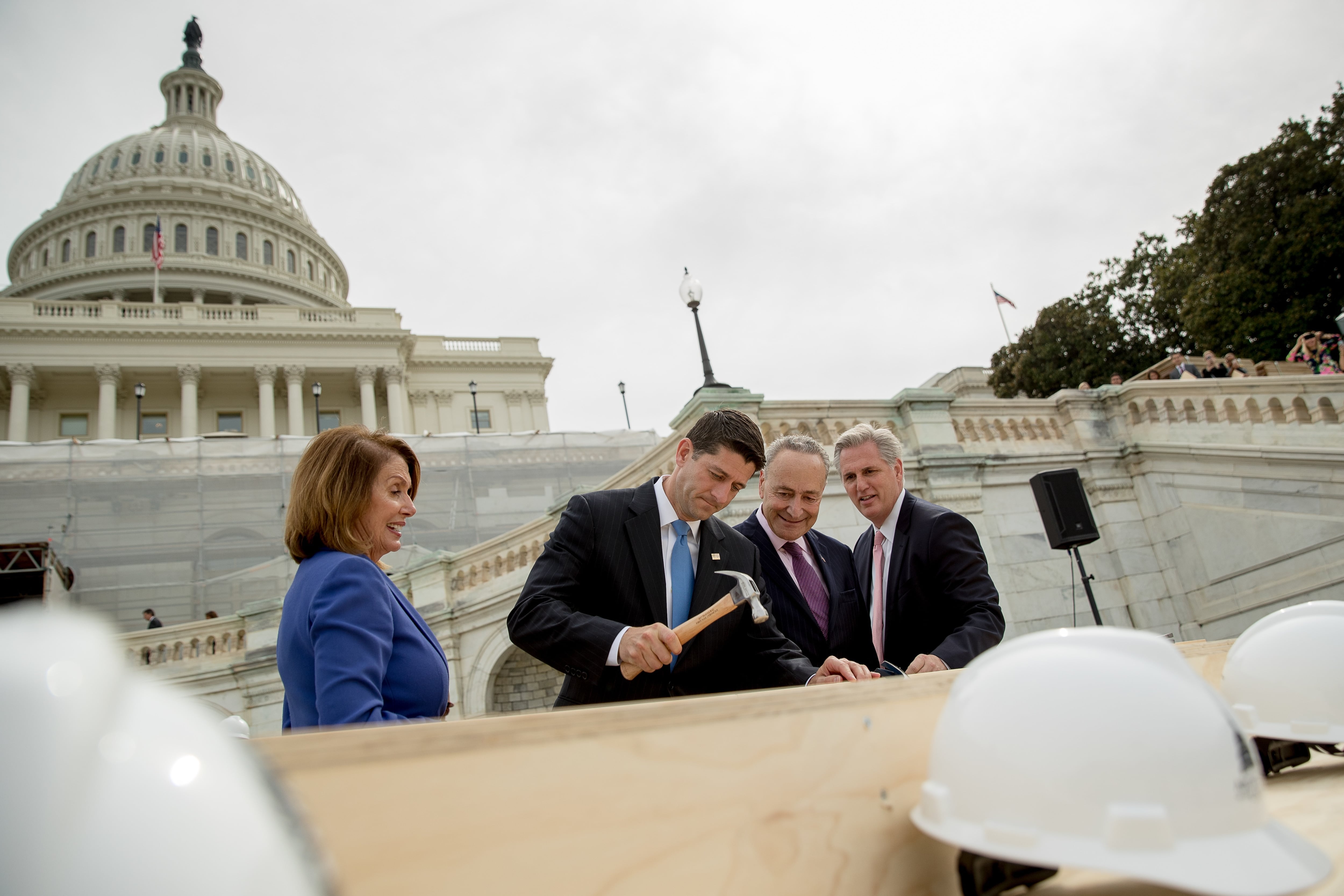The presidential election is still six weeks away, but military planners are already focused on welcoming in the next commander in chief next year.
"There is a lot of [inauguration] preparation going on now," said Army Maj. Gen. Bradley Becker, commander of Joint Force Headquarters-National Capital Region.
"For any national special security event, whether it's the papal visit, State of the Union address, the nuclear security summit, we stand up as a joint task force. So the same people we work with on those are some of the same people we're working on with the security aspect of the 58th inauguration."
Video by Isabella Alvarenga/Medill News Service
Ceremonial and security planning for the country’s change of command ceremony has been underway since last spring, but officials involved in the work gathered this week outside the Capitol building for the "first nail" event, where congressional leaders recognized the start of construction for the inauguration stage.

House Minority Leader Nancy Pelosi of Calif., left, Sen. Charles Schumer, D-N.Y., second from right, and House Majority Leader Kevin McCarthy of Calif., right, watch as House Speaker House Paul Ryan of Wis., hammers in a nail for Schumer after he bent his during a ceremony to drive in the first nails to signifying the start of construction on the 2017 presidential inaugural platform on Sept. 21, 2016.
Photo Credit: Andrew Harnik/AP
Although the event is civilian led, it will involve more than 13,000 military personnel, including about 5,000 troops in ceremonial roles and more than 8,000 National Guard members providing security assistance to local and federal law enforcement groups.
"It’s a pretty big footprint," Becker acknowledged.
On the security side, Becker said military officials are already prepping a host of specialists to provide extra assistance to the Secret Service, Capitol Police and U.S. Park Police.
"They have the lead, and they look at capabilities they might need from us, from explosive ordnance disposal teams to dog teams to detection to chemical and biological detection response force to advance trauma life support," he said. "Those are the kind of capabilities they say ‘we could use from the JTF,’ and we provide them that capability."
On the ceremonial side, officials are expecting the same involvement of military bands, escorts and support personnel as in past inauguration events, although those won’t be finalized until the next president is elected.
"Each president and inauguration committee will do their own thing here, their own take on the parade and what the number of inaugural balls should look like," Becker said. "But just on precedent, we’ve got a pretty good idea of what we need to be planning for, training we need to do, credentialing we need to do."
That work will continue for the next four months. The inauguration ceremony — for whoever wins in November — is scheduled for Jan. 20.
Leo Shane III covers Congress, Veterans Affairs and the White House for Military Times. He can be reached at
lshane@militarytimes.com
.
Leo covers Congress, Veterans Affairs and the White House for Military Times. He has covered Washington, D.C. since 2004, focusing on military personnel and veterans policies. His work has earned numerous honors, including a 2009 Polk award, a 2010 National Headliner Award, the IAVA Leadership in Journalism award and the VFW News Media award.





